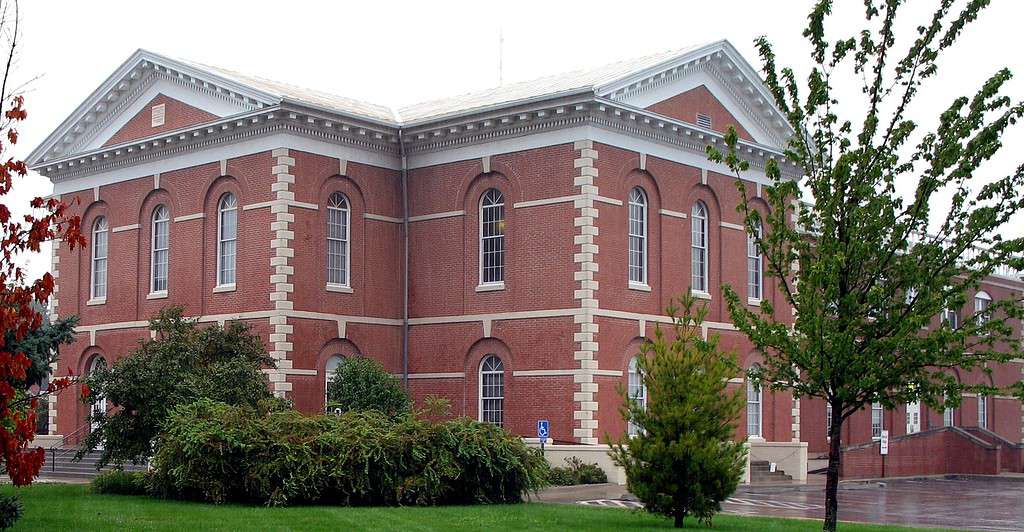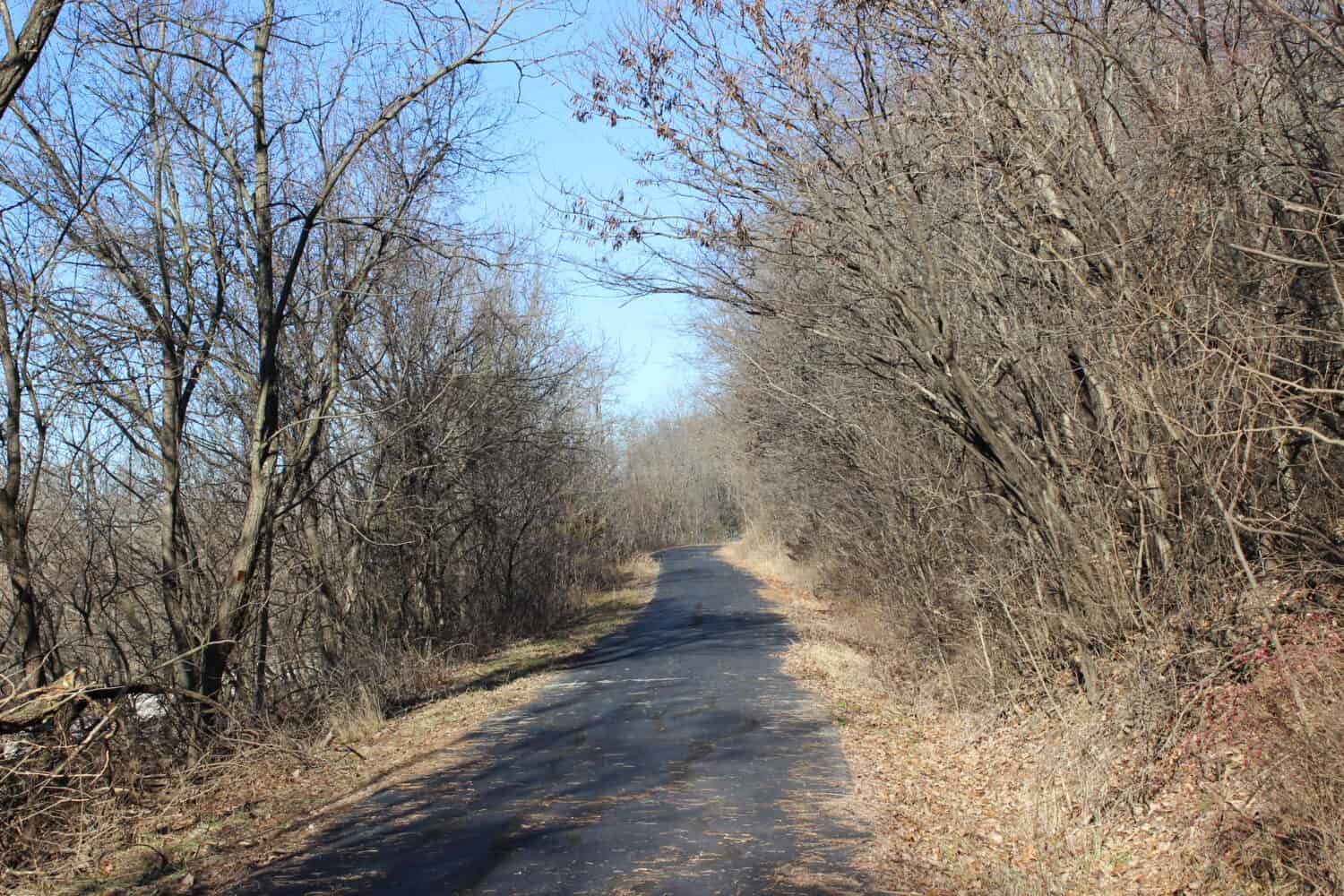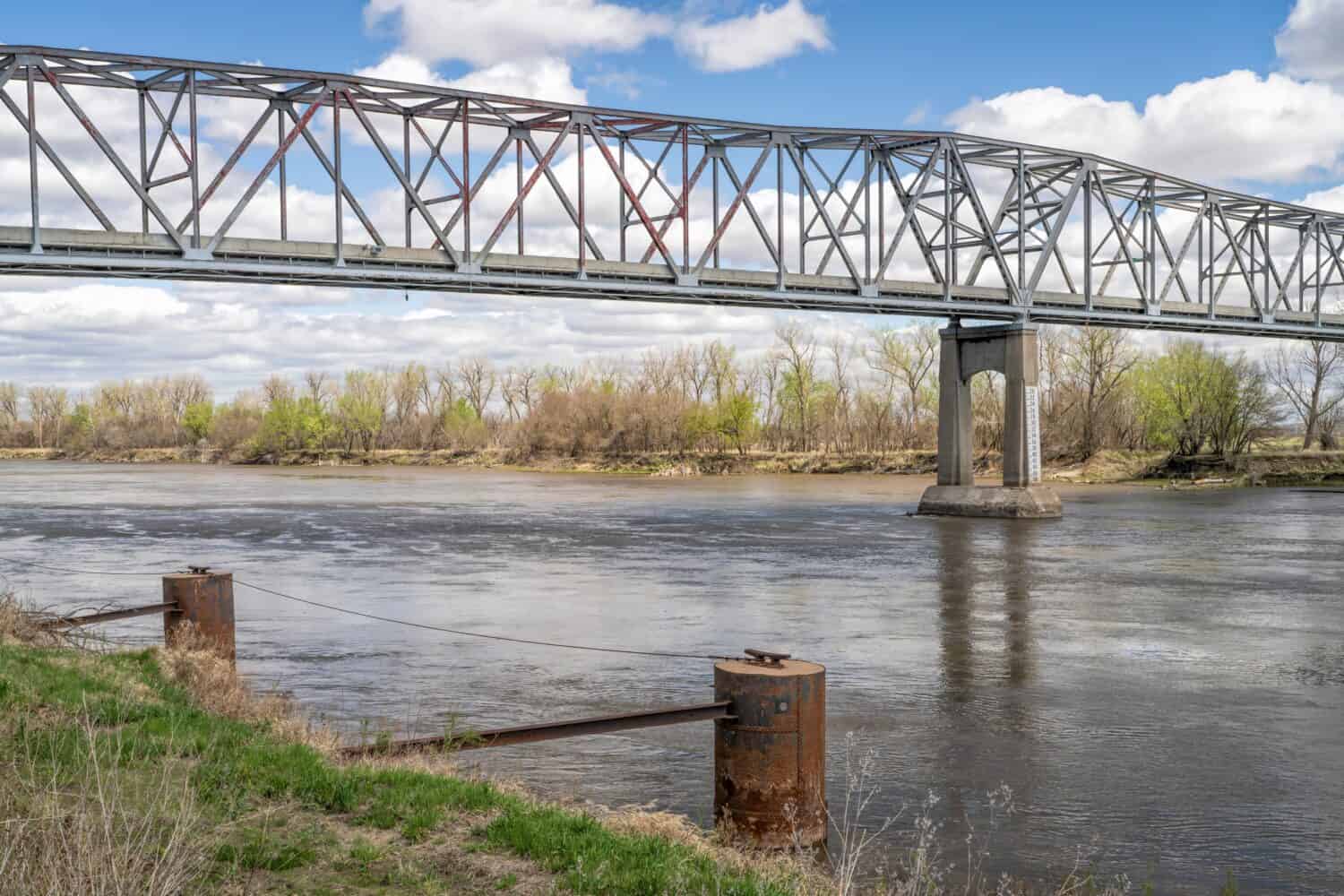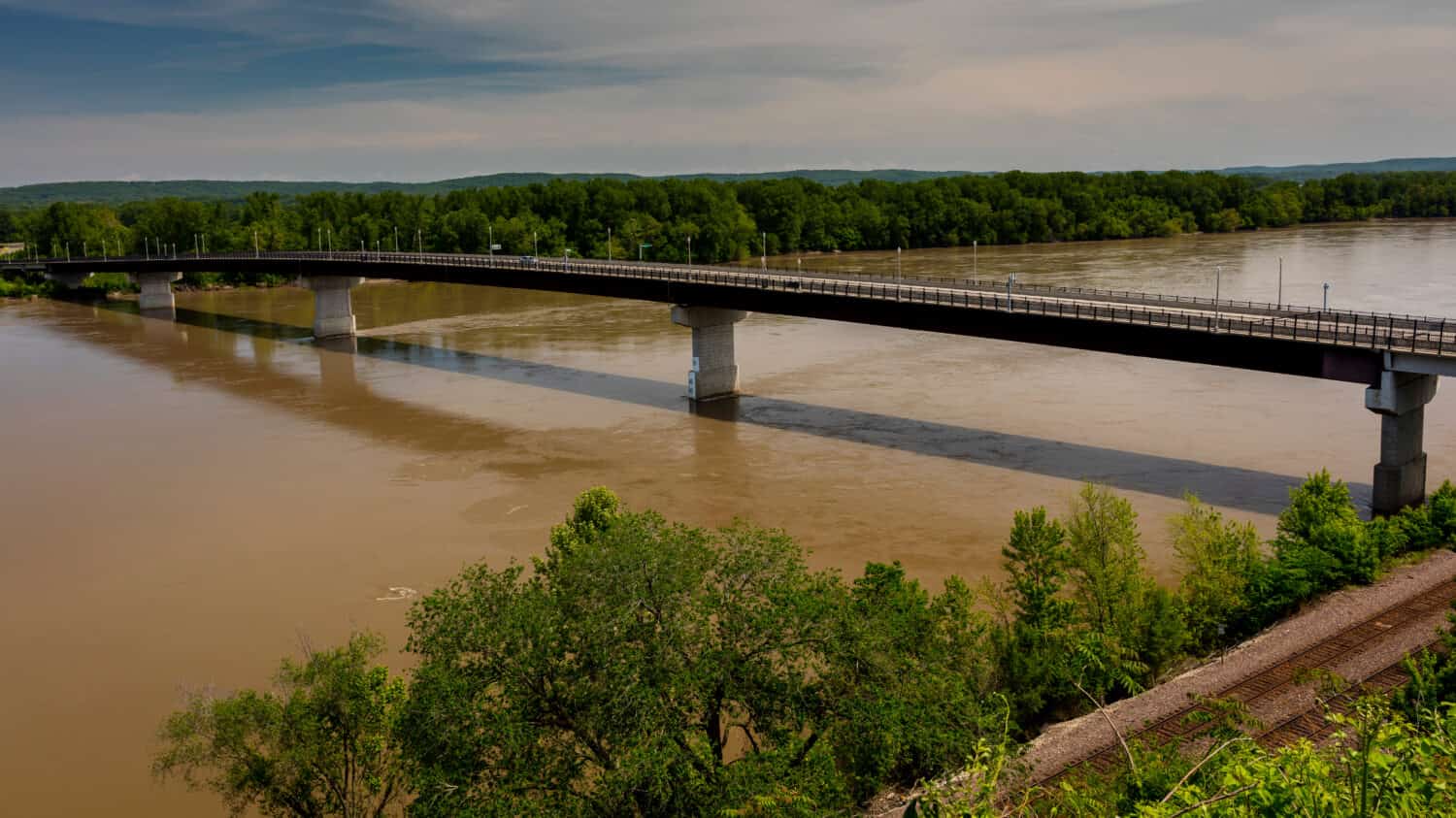Missouri is a state in the midwestern region of the U.S. It shares borders with eight other states: Arkansas, Illinois, Iowa, Kansas, Kentucky, Nebraska, Oklahoma, and Tennessee. Its largest and most culturally significant cities are Jefferson City, the capital, as well as Kansas City, St. Louis, Springfield, and Columbia. This culturally rich state has a strong musical heritage, a prominent sports culture, several important educational institutions, and a diverse economy. Visitors come to Missouri to enjoy the opportunity for outdoor adventure in the Ozark Mountains, state and local parks, and the many cultural sites in each of the major cities. With all that Missouri has to offer, the state’s population has been experiencing slow and steady growth over time.
As of 2021, Missouri was home to just over 6.1 million people. However, some experts expect that Missouri’s population will approach 6.8 million by the year 2030. This will reflect a growth of about 1.2 million people since the year 2000! Each year, Missouri is seeing incremental growth in the state’s total population. In fact, Platte County, Christian County, Clay County, Lincoln County, and Boone County are some of the fastest-growing areas in the entire state. However, there are other areas that are sadly missing out on the same level of growth. This article covers some of the fastest-shrinking counties in Missouri and discusses a few of the factors contributing to their population decline in recent years. Let’s jump in now!

Population Changes in Missouri
As a whole, Missouri’s population has been experiencing slow but steady growth over the last 20 years. Although the growth rate is slower than that of the U.S. as a whole, the state is still gaining new residents every year. However, it appears that many of these new residents are not moving far! In fact, some of the states sending the most newcomers to Missouri are the state’s neighbors: states including Kansas, Illinois, Indiana, and Iowa, as well as larger states like Texas, California, and Florida.
Some new residents may be fleeing from bigger cities such as Chicago, seeking a slower pace of life and the opportunity to spread out and enjoy a lower cost of living. In the last 10 years, thousands of people have flocked to Missouri’s cities. Some of the top destinations where people are moving to are St. Louis, Columbia, and Lee’s Summit, as well as nearby towns.

Platte County, Missouri, is one of the fastest-growing parts of the state.
©Kbh3rd, CC BY-SA 2.5 – License
However, the U.S. census data shows that this population change is not impacting all parts of Missouri equally – while some parts of the state are booming, other counties have seen continual population decline.
What is causing the declining populations? It is likely a variety of factors that impact both Missouri and the broader United States. Some experts attribute the slowing population growth in the United States as a whole to factors like declining fertility rates, aging populations, deaths due to drug overdoses, and other health factors such as the COVID-19 pandemic.
Some of Missouri’s fastest-shrinking counties might see some of these factors first-hand. Before we dive into the list of the fastest-shrinking counties in Missouri, however, let’s review the list of the top fastest-growing counties in the state.
List of the Top Fastest-Growing Counties in Missouri
Here are some of the counties in Missouri that had among the greatest population gains in recent years:
- Platte County
- Christian County
- Clay County
- Lincoln County
- Boone County
- St. Charles County
- Warren County
It is certainly worth taking the time to learn more about these fast-growing parts of Missouri.
List of the Fastest-Shrinking Counties in Missouri
Of all of Missouri’s 115 counties, 78 saw population declines from the 2010 to the 2020 census! In particular, the U.S. census showed a loss of rural populations, especially in northern and southeastern parts of Missouri. These are the counties in Missouri that have seen the greatest population declines as indicated by the change from the 2010 census data to the 2020 census data:
- DeKalb County: -15%
- Holt County: -14%
- Sullivan County: -10%
- Atchison County: -10%
- Montgomery County: -7.5%
- Reynolds County: -7.2%
- Shelby County: -7%
- Nodaway County: -7%
- Ripley County: -5.7%
- Wayne County: -5.5%
A Closer Look at the Fastest-Shrinking Counties in Missouri
DeKalb County

Maysville is the county seat of DeKalb County, Missouri.
©SevenMaps/Shutterstock.com
In 2020, DeKalb County, Missouri, had a population of just about 11,000 people, with a median age of 41 and a median household income of $58,433. DeKalb County is located in the northwestern part of Missouri, which is a region characterized by farmland, rolling hills, and small towns. Unsurprisingly, therefore, the economy of the area is driven by agriculture, and farming for crops like corn, soybeans, and wheat is a dominant industry. Its county seat is the city of Maysville, alongside the other cities of Amity, Clarksdale, Stewartsville, and Weatherby. The area also contains multiple townships: Adams Township, Camden Township, Colfax Township, Dallas Township, Grand River Township, Grant Township, Polk Township, Sherman Township, and Washington Township.
DeKalb County sadly saw a 15% decline in its population between 2010 and 2020. Between 2019 and 2020 alone, the county saw a further 5.22% decrease.
Holt County

Northwest Missouri is known for its rural scenery.
©Jon Kraft/Shutterstock.com
Next on the list of fastest-shrinking counties in Missouri is Holt County, another northwestern county neighboring DeKalb County. Only about 4,300 people call this rural county home. The median age here is 48.7, and the median household income is $46,442. Holt County has a similar geography to DeKalb County, with small communities and a rural landscape. The economy is also based around farming and crop agriculture. Because Holt County has some natural attractions, such as the scenic views of the Missouri River and multiple parks and conservation areas, visitors may enjoy coming to fish, boat, or see the native wildlife.
Its county seat is Oregon, which joins the other towns of Bigelow, Corning, Craig, Forest City, Fortescue, Maitland, Mound City, New Point, and Northwest Point.
Holt County also saw a stark population decline from 2010 to 2020, losing 14% of its total population of the time period between the two censuses.
Sullivan County

A Sullivan County attraction is the Locust Creek Covered Bridge State Historic Site, which features a preserved bridge built in 1868.
©Daniel Stephen Hakes/Shutterstock.com
Sullivan County is tied for third on the list of counties in Missouri with the greatest loss in population, sitting alongside Atchison County. Both saw a 10% decline in their populations between the 2010 and 2020 censuses. Like the first two counties on this list, Sullivan County is located in the northwestern part of Missouri. With a population of 6,163 and a median age of 42.3, Sullivan County is demographically similar to the first two counties on this list. However, it does have a slightly higher poverty rate – in 2020, the poverty rate was 16.7%.
The county seat of Sullivan County is Milan, which joins the other cities of Browning, Green City, Greencastle, Harris, and Newtown.
A notable attraction in the area is the Locust Creek Covered Bridge State Historic Site. This features a preserved cover bridge that was originally built in 1868 and is now included on the National Register of Historic Places. The area also has many scenic landscapes, a tranquil rural environment, and plenty of opportunities for outdoor adventure.
Atchison County

The Brownville Bridge was built in 1939 and is a truss bridge over the Missouri River on U.S. Route 136. It stretches from Nemaha County, Nebraska, to Atchison County, Missouri.
©marekuliasz/Shutterstock.com
Rounding out our list of the top four fastest-shrinking counties in Missouri, and the list of declining counties in the northwest region of the state, is Atchison County. Atchison County shares a small population, of only about 5,180 people. Like some of the other counties on this list, it also has an aging population. In fact, the median age in Atchison County is 48.3.
The town of Rock Port serves as the county seat of Atchison County. It sits alongside the other cities of Fairfax, and Westboro. Back in its history, Atchison County was originally known as Allen County. The name came after it was detached from Holt County in 1843. However, when it was formally organized, it was renamed in 1845 in honor of a U.S. Senator from Missouri. Atchison has plenty of outdoor recreation opportunities to offer, such as hunting and fishing. However, it also made headlines in 2013 when an assortment of exotic animals was seized from a local property. Among the creatures that were being kept illegally in Atchison County was a tiger!
Sadly, Atchison County’s population declined by 10% between the 2010 and 2020 census, a trend that seems likely to continue into the future as the population ages and younger people move toward big cities for jobs and educational opportunities.
Montgomery County

The Hermann Bridge was a cantilevered truss bridge built over the Missouri River between Gasconade and Montgomery County.
©978674/Shutterstock.com
Moving from the northwestern corner of the state to the northeastern region, next on the list of fastest-shrinking Missouri counties is Montgomery County. Like some of the other areas on this list, Montgomery County is a picturesque rural area full of hills, farmland, and small communities. Montgomery County’s population in 2020 was about 11,000 people. Though this population seems to have become relatively stable in recent years, the area did lose 7.5% of its population from 2010 to 2020. The area has a median age of 43.9 and a median household income of $52,123.
The county seat is Montgomery City, which serves as the administrative center for the area. The other local towns are Bellflower, Jonesburg, Middletown, New Florence, High Hill, McKittrick, and Wellsville.
Montgomery County has several important wildlife conservation areas, including the Montgomery Woods Conservation Area. You may see white-tail deer, wild turkey, and a number of other animals on this 348 acres of wooded land. This conservation area also has many different tree species on-site, where you can learn all about Missouri’s native trees.
Reynolds County

Taum Sauk State Park, located in Missouri’s Reynolds and Iron counties, offers incredible views of the Ozark Mountains.
©Steven Schremp/Shutterstock.com
Moving across Missouri to the south-central region, you will find the overall least-populated area in the whole state. With just over 205,000 residents in this entire part of Missouri, this rural area saw 12 different counties (all of the counties in the region) losing population between 2010 and 2020. This was a combination of out-migration of people moving to other places and natural change as the result of an aging population.
In the region, the county that saw the greatest decline in its population was Reynolds County. Reynolds County lost 7.2% of its population from 2010 to 2020. With a population of about 6,200 in the 2020 census, the median age in Reynolds County at the same time was 46.3. The median household income was $39,552 and the area had an 18% poverty rate. The county seat is Centerville. The county has two other cities as well: Bunker and Ellington.
Despite its fast-shrinking population, Reynolds County has a lot to offer! It is known for having rugged terrain, forested hills, and many crystal clear-looking streams and rivers. This rural county’s economy is based on agriculture, forestry, and outdoor adventure. Many residents participate in the county’s significant amount of timber production and farming activities such as chicken and cattle-raising. However, residents and visitors alike participate in outdoor activities such as hiking, camping, fishing, and hunting.
A few of the top attractions in the area are Johnson’s Shut-Ins State Park, which has natural rock formations and swimming holes, and Taum Sauk Mountain State Park, which has the highest point in Missouri and plenty of scenic vistas to take in while hiking its trails.
Shelby County

Shelbyville is the seat of Shelby County, Missouri.
©SevenMaps/Shutterstock.com
Back in the northeastern region of Missouri, Shelby County joins its neighbor, Montgomery County, on the list of fastest-shrinking counties in Missouri. The county had a population of just under 6,000 people in 2020, and the community’s median age in the same year was 42.8. The median household income is $43,809. Second only to Montgomery County, Shelby County saw the largest relative percent declines in population in the region between the 2010 to 2020 census, with a 7% decline overall.
The county seat is Shelbyville. The other cities in the county are Clarence, Hunnewill, and Shelbina.
Nodaway County

Former U.S. President Herbert Hoover owned land outside of Graham, a town in Nodaway County, Missouri.
©Prachaya Roekdeethaweesab/Shutterstock.com
Tied with Shelby County is Nodaway County, another part of the northwest region of Missouri, and one which also saw a 7% population decline between 2010 and 2020. Nodaway County is unusual compared to some of the other places on this list. For one, the city had a population of over 22,000 in 2020! The median age is also much younger – in 2020, it was 30 years old! Shelby County had a median household income of $46,303 in 2020.
The county seat of Nodaway County is Maryville. The other cities in the county are Barnard, Burlington Junction, Clearmont, Conception Junction, Elmo, Graham, Hopkins, Parnell, Pickering, Ravenwood, and Skidmore. Maryville serves as a hub for education, healthcare, and culture in the area, including universities and tourist attractions.
Many notable writers, musicians, politicians, and public figures came from Nodaway County communities. Most notably, former President of the United States Herbert Hoover once owned a farm south of the city of Graham.
The county gained its name from the nearby Nodaway River, which flows through the county.
Summary of the 8 Fastest-Shrinking Counties in Missouri
| County | Percentage Loss | |
|---|---|---|
| 1 | Dekalb County | -15% |
| 2 | Holt County | -14% |
| 3 | Sullivan County | -10% |
| 4 | Atchison County | -10% |
| 5 | Montgomery County | -7.5% |
| 6 | Reynolds County | -7.2% |
| 7 | Shelby County | -7% |
| 8 | Nodaway County | -7% |
The photo featured at the top of this post is © iStock.com/Kent Raney
Thank you for reading! Have some feedback for us? Contact the AZ Animals editorial team.






